
In today’s feature, Lynn reviews the SMSL RAW-MDA1, a new desktop ES9039Q2M DAC and integrated 2.5W capable headphone amplifier. It is priced at $279.99
Disclaimer: This sample was sent to me in exchange for my honest opinion. Headfonics is an independent website with no affiliate links or partnerships. I thank Shenzhen Audio and SMSL for their support.
Click here to learn more about the SMSL products we previously reviewed on Headfonics.
This article follows our current scoring guidelines which you can find in more detail here.
SMSL produces many audio products, with new models coming out frequently with a clarity-driven sound and a feature-rich emphasis at a reasonable price.
The $279.99 RAW-MDA1 desktop integrated DAC and headphone amplifier is the latest product of this thinking. It has multiple digital connections allowing the RAW-MDA1 to be a versatile unit, that can cross two-channel systems as well as your desktop gear.
It is one thing to include such connectivity options it is another thing whether they function properly or not.
Read my full review below to find out how the RAW-MDA1 performs against similarly priced competition including some of SMSL’s desktop gear such as the DL100.
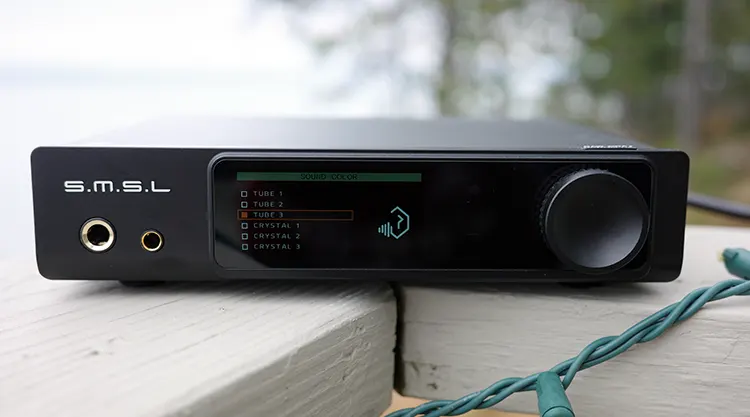

Features
The RAW-MDA1 uses dual ESS ES9039Q2M DAC chipsets and six of TI’s OPA 1612A Opamps (set up in dual mode), with provision for XLR and RCA analog outputs, along with dual Coaxial/ Optical and USB-C input (1.1 & 2.0 for easy game system connection).
The third generation XMOS XU-316 is capable of DSD256, PCM up to 32bit/768kHz, and DoP64 with up to 5 PCM digital filters.
Another inclusion is something called “sound color,” which can change the sound signature from various levels of richness, tube sound, or crystal sound options (3 of each), besides “standard.”
That RAW-MDA1 amplifier can deliver up to 1.57W at 32Ω and 2.5W at 16Ω making it adequately powerful on its own. The power implementation is also kept separate from the DAC circuitry, which helps keep potential interference to a minimum.
The Qualcomm QCC5125 BT 5.1 module supports up to aptX HD and LDAC decoding giving you all of the common wireless codecs at your fingertips.
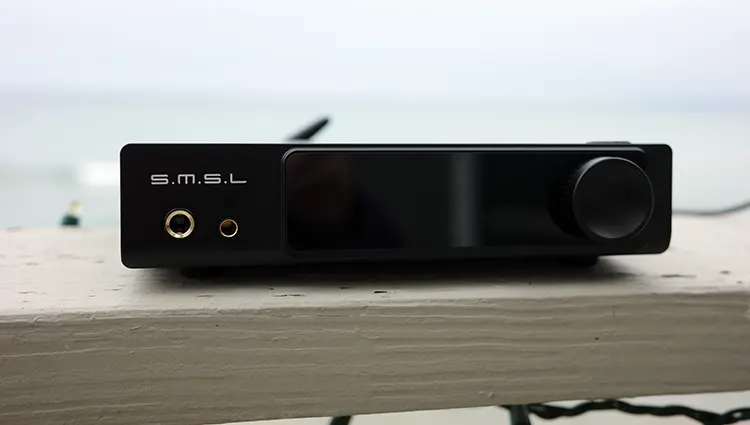

Design
The RAW-MDA1 carries a small footprint, just like the DL100. The versatility this can provide the user is much appreciated.
The matte black finish on all sides (which I am beginning to appreciate more and more) makes for an unassuming piece of gear, meaning it can go about its business without drawing too much attention to itself.
With its 189 x 45 x 179mm (W x H x D) diminutive size (7.4 × 1.8 × 7in) and weighing in at a little over a kilo at 1.02kg (2.24lbs), the RAW-MDA1is quite a compact little integrated desktop DAC, comparing favorably to the DL100 in stature.


I/O
The LCD screen takes up a large part of the front, which is dominated by the large volume/control knob on the right. That LCD screen sits off-center, allowing the 4.4mm balanced & 6.35mm single-end jacks to highlight the left side of the front.
I had no problem with either IEM or headphone jack insertions, like I did with the DL100, though.
The back has the power switch, then the power socket, BT antennae, and USB-C connections which are beside the dual Coax & optical connections going from right to left. Between those is the BT antennae hookup above the USB-C input.
To the left of the inputs are the XLR and RCA outputs rounding out the backside.
While minimal in size, the layout is logical with access to all connections and usable at the same time.
The included remote is exactly like the other two SMSL units I have, but with a dedicated power switch too, one need not worry about reaching around back constantly.
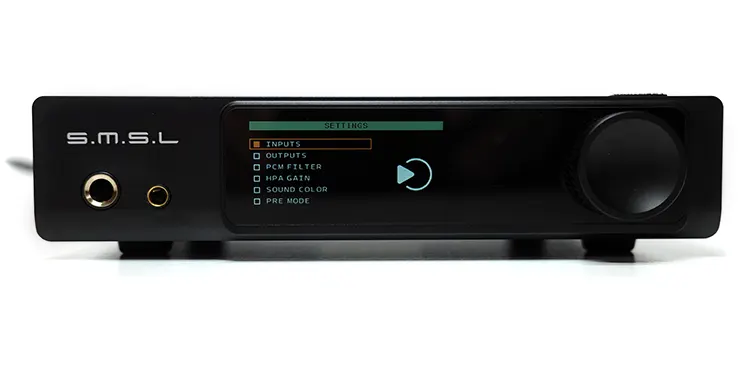

Controls
The multi-function volume knob allows access and rotation between options such as connectivity and filter choices. The lettering is quite small, but I ended up using the remote more to see how well it could work. The remote gave me all of the options I needed.
The one-way 5.1 BT connected easily and would automatically reconnect when powered back on if that source also had its BT turned on. This is especially useful with a streamer since automatic connections are a hallmark of those devices.
Packaging & Accessories
Carrying over from the DL100, it seems that most manufacturers understand that we as customers prefer protective packaging while minimizing resources in doing so.
The SMSL RAW-MDA1 comes in the familiar white box, with the contents protected by medium-soft foam inserts for the RAW-MDA1 and power cord, along with the manual, and BT antennae to sit in.
I appreciate the protective nature of the packaging and do not wish for anything extra, since most of us have plenty of cables sitting around.


Sound Impressions
Listening was conducted with the Spirit Torino Twin Pulse Beryllium IEM, the Kiwi Ears KE4, and the QoA Aviation. All three were used with the 4.4mm balanced jack. The headphones used were the Kennerton Magni, with the 6.35mm jack cable.
Sources included my MacBook Pro, the HiBy R4, and the Oppo BDP-83. I also connected the Geshelli Labs Erish2 as a headphone amplifier to test the RAW-MDA1 DAC.
Summary
The sound emanating from the RAW-MDA1 varied by source input naturally, and the music source being used. I did prefer the balanced output for listening over the 6.35mm single-ended.
The balanced option helped to spread the soundstage out, allowing the instruments to exercise in their own space. Plus, the balanced output gives a cleaner signature, to me.
The RAW-MDA1 promotes a nearly neutral signature, displaying warmth and richness only if the source or music played does so (or when one of the cool filters is chosen). This comes across as one of the more neutral DAC/amps I have tried and is similar to the DL100.
The lows are more polite than the DL100 but without bloat or carrying over into the mids. The top-end reach will add a bit of sparkle and a distinct clarity to the notes without becoming grating or harsh.
Timbre
SMSL amplifiers are known for a mostly clear, clean signature, without much variation between models, save for the internal chips. The RAW-MDA1 is one of the less colored versions SMSL currently has, promoting the midrange with a forward push.
This neutrality of sound does allow the excellent low-end to come through with verve and tight control. The lack of coloration in the sound carries through from the low end to the top, with succinct, tight treble notes that are punctuating without being too sharp or analytical.
This lack of coloration does not hinder the musicality involved, with both male and female vocals coming across as accurate and detailed. The natural character of both makes for an accuracy with which SMSL is known.
Just like the DL100, the RAW-MDA1 provides adequate note weight without becoming too thick. The lack of stringency above is a welcome addition to this signature. I never felt the need to lower the volume on complicated pieces or other songs, that carry much of the sound in the upper reaches.
Staging & Dynamics
The soundstage is dependent upon the source for expression, but the width and height coming from the RAW-MDA1 are quite broad. It sounds deeper than the DL100, providing a good space for the notes to stretch out.
Connected to the Oppo BDP-83 I was quite happy with the performance and appreciated what could be had from such a product in terms of characteristics and cost.
The OPA1612a Op-Amps did their job too, but without enough power to drive harder headphones. Since this is a DAC first and foremost this can be forgiven. When paired with a good desktop amplifier (or portable for that matter), the driving power is only limited by what you connect.
Plus, the DAC did its job providing the space mentioned above for the overall signature to breathe in space quite well. The layering of sound was more of a delineation of separate layers than combined, which for music such as EDM played nicely into the individual parts.
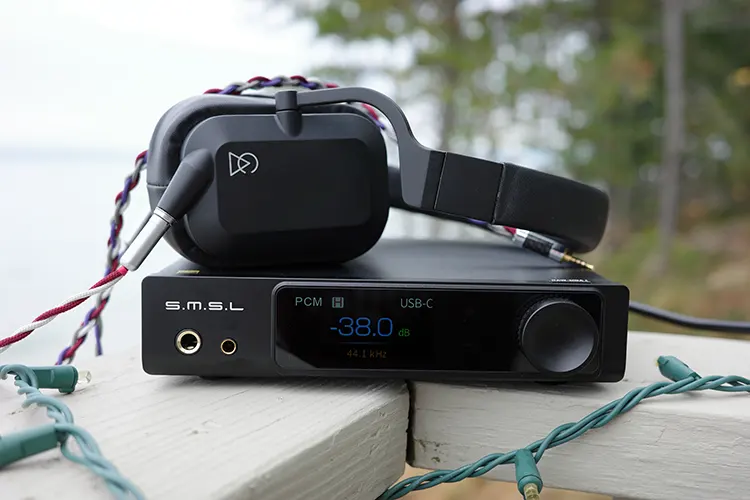

Synergy
The SMSL RAW-MDA1 worked across many different sources, including using it as the front end with my oppo BDP-83 as a CD player, the HiBy R4 as a DAP source, and my MacBook Pro for the same purpose.
Plus, the RAW-MDA1 connected seamlessly to my Klipsch The Sixes through the optical connection, or first to another amplifier, then The Sixes.
My favorite connection was again the OPPO BDP-83, and just like before, I spent a significant amount of time listening in this manner, across both IEMs (Spirit Torino Twin Pulse Beryllium) and headphones (Meze Audio 99 Classics, and my older Campfire Audio Cascade).
The lower regions came across with more verve and thump which suited the otherwise neutral signature very well.
The HiBy R4 was connected using the USB-C connection on both ends, and the USB Audio Pro app had to be used.
I easily brought up both Tidal and Qobuz from within the app. A slightly deeper-reaching bass and still a fairly neutral signature came about with this pairing, which countered the oppo’s more analytical direction.
The Klipsch The Sixes connection was straightforward through the optical cable, providing a vibrant, sparkly signature; which fit the speaker’s tendency for a treble-pushing signature.
This pairing almost became too neutral and sparkly for my tastes, but I put this down to The Sixes’ tendency for that signature due to the horn driver.
Efficiency
This is almost an unfair part of the review since the RAW-MDA1 is first and foremost a DAC (and a good one). When used by itself, I could reach copious amounts of volume, but not the kind that would provide the most out of several headphones I tried.
The need for a dedicated amplifier is a must if you drive high-impedance headphones. When combined with a similarly matched amplifier such as one I have for an upcoming review, the pairing worked quite well.
Power
The RAW-MDA1 can certainly drive easier headphones such as the Meze Audio 99 Classics, FiiO’s FT3 (32Ω), or the Campfire Audio Cascades, but suffer when the impedance strays too high.
It is not meant to drive high-impedance headphones. The RAW-MDA1 is oriented towards lower impedance gear and can seamlessly fit powered speakers. The Sixes are a powerful speaker in their own right and took advantage of the pairing better than some of late to me.
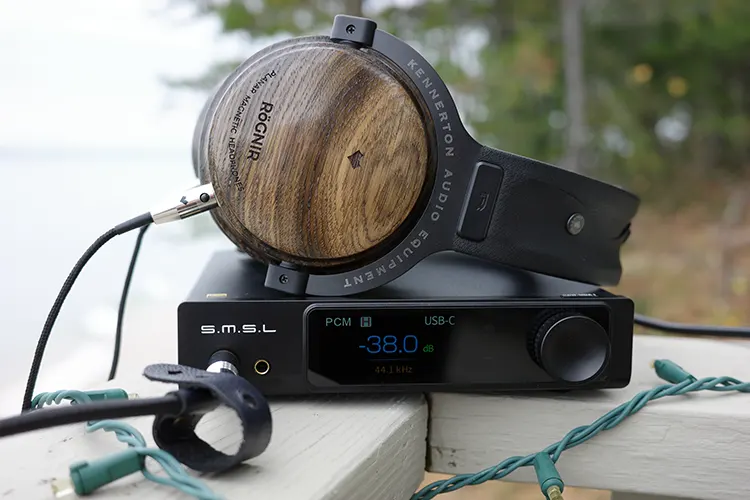

Pairings
I was able to (briefly) pull out my Kennerton Rognir headphones when I paired the RAW-MDA1 (much like the DL100 review) with the Geshelli Labs Erish2 headphone amplifier (XLR headphone port only, on the Erish2).
I found the Kennerton’s worked well using the Erish2’s power to properly drive them to not only a loud level but one with very good sound qualities. The RAW-MDA1 did its job, working as the DAC seamlessly in the background.
My favored pairing was the Meze Audio 99 Classics with the ddHiFi BC-150B 4.4mm balanced cable. Queuing up a CD on the Oppo or Tidal on the R4, the sound added more low-end capabilities to what some describe as quality sound from the 99 Classics without becoming thin.
The Campfire Audio Cascade can be rightly described as a bass cannon, so I did not worry about the bass effects. What struck me was how the RAW-MDA1 helped “clean up” the signature, without losing the Cascades “character.”
The bass was still present in bulbous quantities, but the midrange took on even more clarity, which could be expected. The pairing with the RAW-MDA1 seemed made for the Cascade’s “deficiencies,” and I ended up liking this right behind the 99 Classics.
I enjoy the Spirit Torino Twin Pulse IEM and still pull the pair out regularly for reviews and personal listening. I found the RAW-MDA1 and the R4 worked better than the DL100, with a noticeable increase in bass quantity over “regular use.”
The Twin Pulse is already an excellent performer but adding a bit down low raised that standard a bit higher.
Click on page 2 below for my recommended pairings.
creditSource link







